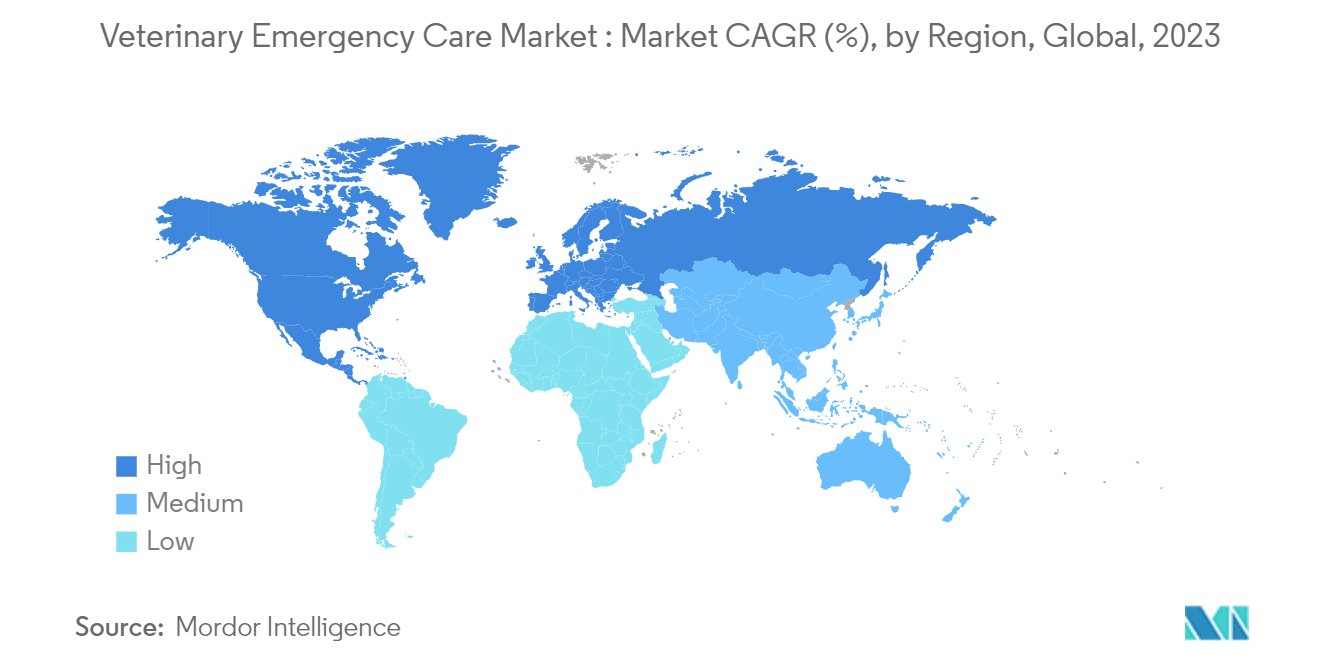Market Trends of Veterinary Emergency Care Industry
The Segment for Dogs is Expected to Hold a Significant Market Share During the Forecast Period
The segment for dogs is expected to dominate the market owing to the increasing number of pet dogs globally and market players' expanding range of services during the forecast period.
According to data from the European Pet Food Industry: Facts and Figures 2023 report, Europe is home to around 340 million companion animals, with approximately 46% of households owning at least one pet in 2022. In Germany, for instance, there were approximately 10.6 million pet dogs in 2022. As of July 2023, in the United States, 65.1 million households had a dog as a pet. Dogs were considered the most popular pet in the region per the statistics published by Forbes in July 2023. People in the United States spent USD 136.8 billion on their pets in 2022, an increase of 10.63% from 2021. The increasing pet ownership is likely to raise the requirement for veterinary emergency care and strengthen market valuation during the forecast period.
Along with increasing pet ownership, numerous regional governments are taking initiatives to offer cost-effective emergency care services. For instance, four municipal veterinary hospitals in Brazil offer free public services to thousands of pets. As of May 2023, there were 1.9 million dogs in Sao Paulo. The affordability of veterinary care is still a challenge for various pet owners in the city. The governing body allocated USD 5.3 million to these four municipal hospitals for 2023. Therefore, initiatives from non-profit organizations and governing bodies to fill the supply-demand gap in the veterinary emergency care market are expected to support the growth of the market during the forecast period.
The increasing trend of dogs as pets globally and the rising accessibility to veterinary hospitals are factors expected to propel the growth of the segment for dogs.

North America is Expected to Hold a Significant Market Share Over the Forecast Period
North America is anticipated to witness significant growth during the forecast period. This can be attributed to factors such as the increasing adoption of animals as pets and the strong presence of major market players engaged in various service compositions to increase the accessibility of emergency care.
Numerous large veterinary centers are launching emergency services centers to meet the growing demand for the market. For instance, in October 2022, NVA Canada reported an opening of specialty and emergency veterinary care in Nova Scotia, Canada. The facility also includes ambulatory care and offers 24/7 emergency care service. Similarly, in April 2023, Cedar Animal Hospital in the United States announced expanding its veterinary care services by entering the emergency services segment. The hospital opened a new veterinary emergency care with around 65-70 professionals and is expected to grow to 100-120 in the near future. The increasing number of emergency care facilities is anticipated to reduce the waiting time for patients and assist the overall market in addressing a larger patient base in minimal time.
Additionally, the strategic initiatives by market players are expected to propel the market’s growth in the region during the forecast period. Regional players are developing various business models to combine emergency care services with the price level of general care. For instance, in May 2023, a new clinic with an integrated business model of general and emergency clinics opened in Texas, United States. The clinic offers an emergency service at an examination cost of USD 99. The fee is around 40% less than that of the emergency clinic, and it operates only during the non-working hours of the general clinic. The new service composition of the clinic is likely to address the market limitation of the high cost of emergency care services and enhance the patient base by offering affordable services.
Such initiatives, along with the rising pet insurance in the region and expanding the accessibility of veterinary emergency care across all economic class populations without incurring high operational costs, are expected to have a positive impact on the overall market during the forecast period.


